-
Posts
12419 -
Joined
-
Last visited
-
Days Won
551
Content Type
Profiles
Forums
Events
Everything posted by Fiery
-
It's normal for powerful mobile PCs.
-
Please try to enable the option called DIMM thermal sensor support on the page AIDA64 / main menu / File / Preferences / Stability, and restart AIDA64 to apply the changes. Let me know if it helps. I've moved your topic under Bug Reports
-
Please right-click on the bottom status bar of AIDA64 main window --> System Debug --> USB Dump. Copy-paste the full results into this topic, or attach the results as a TXT file to your post. You may need to enable status bar in AIDA64 / main menu / View first. I've moved the topic under Bug Reports Thanks, Fiery
- 12 replies
-

Gigabyte X570 Series - Sensors und Fan-Names
Fiery replied to golgorod's topic in Hardware monitoring
Yes, System #n is called Chassis #n in AIDA64, that should be the difference but it's normal. As for the Gigabyte RGB Fan Commander, please right-click on the bottom status bar of AIDA64 main window --> System Debug --> USB Dump. Copy-paste the full results into this topic, or attach the results as a TXT file to your post. You may need to enable status bar in AIDA64 / main menu / View first. Thanks, Fiery -
Fans and pumps from such controllers could disappear when they stop, ie. when their RPM becomes zero. Is there a chance both the fan and pump can stop on your Krakens? Also, please note that AIDA64 supports only one Kraken device, so in your case only the first one it can detect will be supported. I'm not sure if the primary controller is for the CPU or GPU in your system. Please also note that NZXT's own monitoring software (CAM) may also collide with AIDA64 during low-level hardware communication, so it's best to close CAM to verify if the missing fan/pump is due to a collision or due to an AIDA64 bug.
-
Do you mean you would like AIDA64 to allocate one out of the 15 LCD keys available and use it as an external LCD screen to display sensor info and such? I'm not sure if there's anything more than that possible, like to use multiple keys together or separately by a single software.
- 46 replies
-
- stream deck xl
- elgato
-
(and 4 more)
Tagged with:
-
Do you have TT's own monitoring software running in the background, along with AIDA64?
-

Asus Prime X470-Pro fan logic reverses with AIDA64 running.
Fiery replied to Rockstonicko's topic in Bug reports
Feel free to share this topic with anyone. I'm glad you like using AIDA64. I wish we could do more to fix this issue and issues about monitoring Asus AM4 motherboards internally. But with the whole thing riding on how Asus implements the WMI ACPI interface, we need to work with Asus and expect them to deliver the fix soon. -
Battery Capacity is shown on the Battery page in our AIDA64 for Android app. In the Windows PC version of AIDA64 you can find the information on the Computer / Power Management page.
-

CPU temperature never moves (Asus ROG Strix B350-I Gaming)
Fiery replied to cqman's topic in Bug reports
Thank you for the photos. I suppose the issue is because of the problem with Asus AM4 motherboards where concurrent access by a 3rd party monitoring tool (like AIDA64) and the motherboard BIOS can cause collisions which could make the fans to act up. In case your motherboard supports Asus WMI ACPI interface, you can try switching to that to avoid the collisions: go to AIDA64 / main menu / File / Preferences / Stability / tick the option called: Asus WMI sensor support and restart AIDA64 to apply the changes. If you cannot see the 2nd line on the Computer / Sensor page to change to "Asus WMI", then your motherboard doesn't support the new Asus monitoring interface and so we cannot fix the problem from our end. BTW, you've got a nice AX206 there -

Blue screen when AIDA64 starts (MSI MEG X299 Creation + i9-7940X)
Fiery replied to vidalsh68's topic in Bug reports
If you have no RAID arrays defined, you can try disabling the two RAID related options in AIDA64 / main menu / File / Preferences / Stability. It accelerates AIDA64 startup and you can also avoid BSoD in certain circumstances. -

Asus Prime X470-Pro fan logic reverses with AIDA64 running.
Fiery replied to Rockstonicko's topic in Bug reports
On Asus AM4 systems it's safer with the Asus WMI sensor support enabled. Without it concurrent access by AIDA64 and the motherboard BIOS can cause collisions that may just end up in fan duty cycles messing up. Please note that even though the new Asus WMI ACPI interface was invented and designed to avoid those collisions that plagued the Asus AM4 platform since the very beginning, the interface is poorly implemented in multiple Asus motherboards. It is also not implemented all across the board. So while it's a great thing in theory, in practice it causes a lot of headaches. All you can do is put more pressure on Asus to fix this issue in a future BIOS update. -

Where to find motherboard T-Sensor output (Asus Prime X470-Pro)
Fiery replied to Artur Noole's topic in General Discussion
I don't think Asus' own monitoring tool uses their own ACPI WMI interface simply because it's still not mature. Your case is just one example where it has a glitch. A future BIOS update is the only way to fix this up. -
Please right-click on the bottom status bar of AIDA64 main window --> System Debug --> USB Dump. Copy-paste the full results into this topic, or attach the results as a TXT file to your post. You may need to enable status bar in AIDA64 / main menu / View first. BTW, do you have NZXT CAM running in the background? Thanks, Fiery
-

CPU temperature never moves (Asus ROG Strix B350-I Gaming)
Fiery replied to cqman's topic in Bug reports
Please post a screenshot of the Computer / Sensor page of AIDA64. -
1) It depends on the actual DRAM frequency your memory modules are running at. Make sure to have XMP enabled in the BIOS Setup, and then check the DRAM frequency in AIDA64 again. If you still have doubts about its accuracy, compare the clock readings against CPU-Z or HWiNFO64. 2) It's difficult to tell, but most likely it is. You can enable Extended Labels to clarify the generic sensor readings in the right-click context menu on the Computer / Sensor page. 3) Chassis #3 is one of the fan headers located on your motherboard. Fan RPM is always for a single fan. No averaging or other combination of multiple fans is done by AIDA64. 4) Same as 2)
-

LSI SAS 9305-24i HBA: Possible to get controller temperature?
Fiery replied to amvolante's topic in Hardware monitoring
We've checked, and the LSI libraries aren't seem to be able to provide thermal readings for the controller, so we cannot measure it from AIDA64


